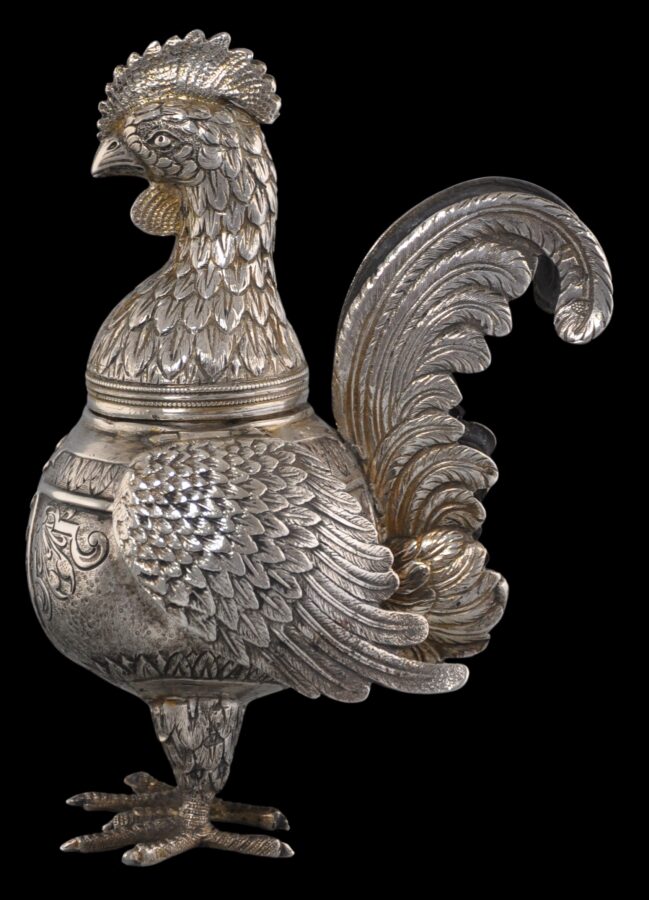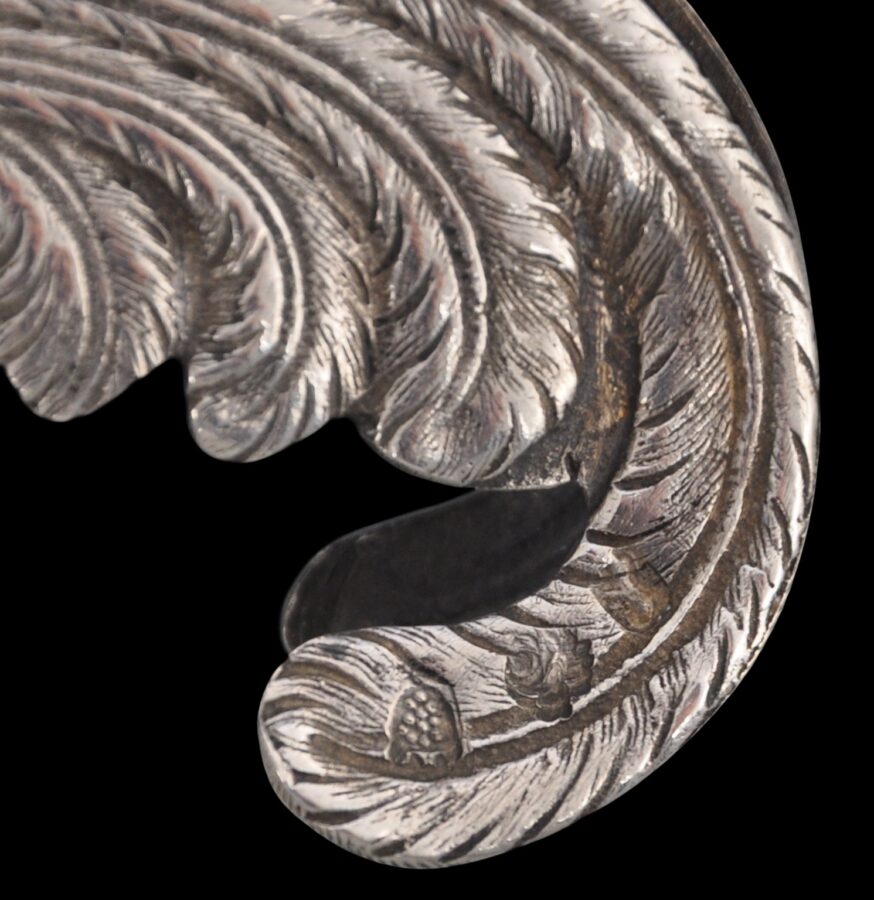This splendid 18th century incense burner or censor is in the form of a rooster. Made of silver, it retains signs of having been fully gilded. The rooster stands upright and has moveable wings (they are hinged), and an extravagant tail.
The body is globular and chased and engraved with Baroque-style ribbon-like flourishes.
The head has a prominent comb and a pair of wattles hang beneath the beak.
The head pulls off to reveal a silver plate perforated to allow the incense smoke to escape. The plate is surmounted by a pull shaped as a miniature rooster.
The tail is impressed on one side with maker’s or assay marks which we have not been able to identify.
Similar rooster-shaped vessels attributed to Lima, Peru, are illustrated in de Lavalle & Lang (1974, p. 103, and the cover).
Incense burners were used in wealthier colonial homes in Spanish colonial South America to sweeten the air and counteract odours coming from inadequate sewerage systems, but also as a way to discourage mosquitoes.
The example here is in excellent condition.
References
de Lavalle, J.A. & W. Lang, Arte y Tesoros del Peru: Plateria Virreynal, Banco de Credito del Peru en la Cultura, 1974.












